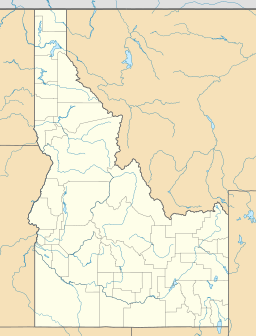Upper Smoky Dome Lake 1 facts for kids
Quick facts for kids Upper Somky Dome Lake 1 |
|
|---|---|
| Location | Camas County, Idaho |
| Coordinates | 43°30′05″N 114°57′15″W / 43.501520°N 114.954222°W |
| Type | Glacial |
| Primary outflows | Boardman Creek to South Fork Boise River |
| Basin countries | United States |
| Max. length | 98 m (322 ft) |
| Max. width | 36 m (118 ft) |
| Surface elevation | 2,800 m (9,200 ft) |
Upper Smoky Dome Lake 1 is a beautiful, clear lake found high up in the mountains of Idaho, in the United States. It's known as an alpine lake, which means it's located in a mountain area, often above where trees can grow. This lake is also a glacial lake, formed long ago by huge sheets of ice called glaciers. You can find it in Camas County, nestled within the Soldier Mountains inside the Sawtooth National Forest.
Discovering Upper Smoky Dome Lake 1
Upper Smoky Dome Lake 1 is a special place because it's quite hidden away. There are no easy trails that lead directly to the lake. This makes it a quiet and untouched spot for those who manage to find it.
Where Is This Lake?
The lake is located in Camas County, a part of Idaho known for its natural beauty. It sits within the Soldier Mountains, which are a mountain range in central Idaho. These mountains are part of the larger Sawtooth National Forest, a huge area of protected land with forests, mountains, and many lakes.
The lake is found in an area called the Smoky Dome Lakes basin. This basin is northeast of a very important peak called Smoky Dome. Smoky Dome is actually the highest mountain in the entire Soldier Mountains range!
How Glacial Lakes Form
Upper Smoky Dome Lake 1 is a glacial lake. This means it was created by glaciers. Imagine giant, slow-moving rivers of ice that once covered parts of the Earth. As these glaciers moved, they were incredibly powerful. They scraped and carved out the land, digging deep hollows and valleys. When the climate changed and the glaciers melted, these hollows filled up with water, forming lakes like Upper Smoky Dome Lake 1. These lakes often have very clear, cold water because they are fed by melting snow and ice.



